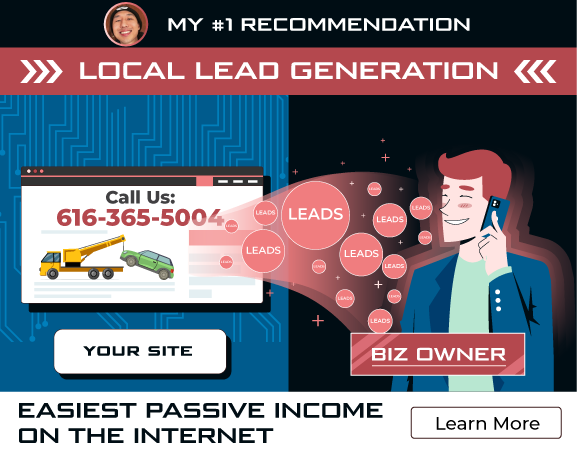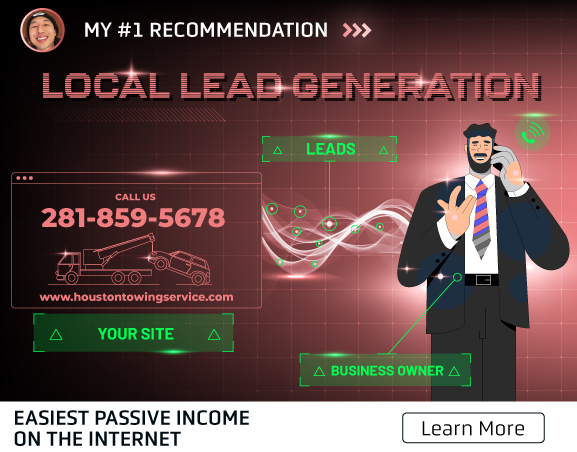Ippei's Onboarding & Training Resource Guide
Thanks for joining our writing team. Please review all the information below.
Day One Tasks:
- Complete onboarding - Done!
- Place Trial Article Keyword in Cluster Sheet.
- Watch this introductory SOP video.
Install this brower extension for proofreading - https://prowritingaid.com/
- Prowritingaid sign-in:
ippeikanehara7@gmail.com
PW: 1jobkilling
Install this browser extension for keyword research - keywordseverywhere.com
- Purchase the bronze package OR 10,000 credits.
- We will reimburse your for credits. Send a screenshot of your purchase to Ippei at the end of the month along with your hours.
Install this browser extension to help you see no follow links - NoFollow Extension
- IMPORTANT: Internal links = do-follow, NOT open in new tab.
- UNLESS: Every conclusion has a link to ippei.com/best. This link should be no follow and open in new tab also unless a link is going to the /best/ page lets make all internal links NOT open in new tab.
This download is to help speed your course review research:
- Watch this video.
- Download this plugin.
- Downlod their companion app. It allows you to directly download from this plugin.
Process (NOTE: You will come back to this when writing your trial article):
- After downloading a video, upload it to Descript. Sign-in details:
- ippeikanehara44@gmail.com
- 1Snowman!2
- Start new project in descript.
- Upload the video.
- Descript transcribes the entire video.
- Ask Chat GPT 4 to give you a detailed summary. If you want more details about any part of the summary, ask Chat GPT like so (click to zoom):

- Team meeting every Tuesday night at 11 pm PHT.
- Send weekly report at the last hour of your work week (Friday, for instance) for Monday prior -Sunday.
Deliverables due by end of day:
- 10 questions/insights about the resources below sent to Erin on Slack.
- Take Welcome Quiz - Remember, it's open book!
Day Two Tasks:
Details for your trial article will be sent on Slack.
Do not write over 500-800 words.
We do this so we can see your natural ability to write while leaving space to build out the final product.
Deliverables due by end of day two:
- Send 500-800 word trial article to Erin on Slack as a Google Doc.
- NOTE: All articles will be submitted as Google docs until Week 4.
- Take Required Tasks and Top Info Quiz
These Tasks should be completed by the end of your first week:
- Complete edits to your trial article. If edits have not been made yet, go to next step and come back.
- Complete Marketmuse module in resources below.
- Revisit Required Daily Tasks module and ensure you're following daily procedures.
Deliverables due by end of WEEK ONE:
- Finalized article built out following this checklist and video. Note that you do not have a CB, but these steps will help you remain on task.
- Submit article to 1-article-submission channel as pictured. Template here.
- Take Training Modules Part 1 Quiz

Week Two Tasks:
- Take Training Modules Part 2 Quiz
- Complete edits to trial article.
- Complete Koray module in resources below.
- Your next assignment will arrive on Slack. You will be writing off of a content brief. Do not start this assignment until you complete the Koray module.
Week Two Deliverables:
- Training Modules Part 2 Quiz
- Training Modules Part 3 Quiz
- Second article submitted to 1-article-submission
Week Three Tasks
- Coaching Huddle
Week Three Deliverables
- Third article
Week Four Tasks:
- Complete Thrive module in resources below.
- Begin your fourth article.
- Use Thrive for fourth article (and all articles moving forward).
Week Four Deliverables:
- Training Modules Part 4 Demos
- Fourth article
Deliverables due by end of WEEK FIVE:
- 2 articles/week
Deliverables due by end of WEEK SIX:
- 2 articles/week
- Possible 2nd Coaching Huddle if needed
Visit this Doc to easily search answers to Qs you may need!
Required Tasks & Top Info
2024: COPY GUIDELINES
- Write without fluff
- Interject entities
- Cite sources, stats & real numbers whenever possible
- Write clearly in NLP manner in the first sentence of every paragraph - especially below a H2 or H3. Google bots read the first sentence to determine responsiveness because they're always trying to save cost. They will not read rest of the paragraph or content if it seems off topic. Always start first sentence in a NLP manner that shows Google we're relevant / on topic
- Avoid over complicated sentence structures or paragraphs that have multiple meanings. This makes it difficult for the Google bots to understand
- Understand the difference between macro context and micro context. The micro context should be at the bottom of the page and shouldn't dominate more area of the page than the macro context.
- Understand the importance of creating unique questions towards the bottom of page that don't already exist in the PAA. This makes our content unique and makes Google trust us more because we are providing new answers to new questions.
- Understand the difference between writing as an authority vs. writing with personal experience. Overall, you guys are all taught to write as an authority and fact based. The difference is in different words you use - (I feel, I believe - would all generate personal experience sentences). Depending on the question being asked in the H2 or H3 above, personal experience sentence may be more appropriate, because it makes our content more unique & original. This is especially true if we can back up our fact-based statements with personal experiences from rael users or people that have actually experienced the business model. It's valuable to research places like YouTube or Reddit to find personal experiences that share specific numbers & $ amounts that we can extract and share in our articles. Using plugins like "YouTube Summary with ChatGPT & Claude" you can quickly mine out info from YouTube videos. However, remember that fact-based authority writing vs. personal experience writing should be separated within the article from each other.
- Note: Covering multiple perspectives can make our articles more comprehensive and more useful to more types of people and ultimately help us to rank. Google is combating AI generated content, so having sections where we're interjecting more information, data, figures, entities or personal experiences is becoming more valuable than ever.
MAY 2024: PERSONAL / UNIQUE / REAL EXPERIENCES
WHY IT'S IMPORTANT
Google does not want to lose searchers to Bing and other enginges.
If we just copy questions from other websites and PAA, and answer in the same way as other sites, Google don't really feel the need to rank your site because they already have those answers to those questions.
It's still important to cover those commonly asked questions and try to answer in a better way.
BUT- if we begin showing Google new questions then Google will begin to favor our article more as an authoritative source.
This is how Google ensures all these new questions are answered. A part of their algorithm is constantly checking for new info on any topic.
If we are answering questions that doesn't exist in the consensus already, then Google has no choice but to begin see our article as more authority over time.
Next, watch this video for an actionable strategy.
OVERALL MAIN FOCUS
Producing top quality content is the most important thing.
In fact, when a website produces higher quality content, it impacts other pieces of content connected to that article and makes that content rank higher.
The same is true in the reverse.
If anyone begins producing low quality content on the website, it will negatively impact other articles.
So, it’s majorly important that we're all on the same page when it comes to our writing philosophy and any changes we discuss on Slack.
Over time, Ippei will assess how well your articles are ranking in the search engine.
This is the ultimate test for your ability to follow directions and your writing ability.
If you have any questions or want more coaching, always be proactive and let us know.
Visit ippei.com/blog for the latest published articles.
Note the differences between Course Reviews and Broad Topic articles.
--------------
Article Process SOP video
Article Process Steps
This is a streamlined step-by-step guide through writing an ippei.com article in an organized way.
KEY TAKEAWAYS:
- Use the CB as an outline in docs, and keep everything in the same place.
- Read the CB first and do your initial research for NLP answers in your AC. This is "pre-research".
- Take notes on your outline as you go through the Research steps of the process linked below.
- Write the article using the notes that you kept in your doc as your main strategy (of course you can do more research but only if you need to)

Copy/Paste: 2024 SUBMISSION GUIDELINES
@Ippei @Erin Stob
Title:
KW:
Link:
CB Link:
AC Link:
Note: Top 3 Google search results are X. Our article beats them by X.
Entity Report:
- Keywords Everywhere Entities :
- #/ out of # MM :
- 10 ChatGPT entities:
- 2 deep entities added in intro:
- # Google-generated entities:
Published URLs should be:
- the keyword without filler words (the, a, an etc)
- 3-4 max
1. Contextual vector: the flow of information throughout an article about a keyword from most relevant to least relevant.
2. Macro context: The main content in a contextual vector; the answer to the keyword’s question.
3. Micro context: Supporting content that comes after the macro context; broader information (but not too broad)
4. Entity: industry-specific language, used by those who are truly working in the topic each day. Not general language, not typically included in AI generated text
5. Keyword: main topic / query of your article. Also, additional entities found and included in the article, never stuffed.
6. NLP Language: Natural Language Processing, aka rephrase the wording of a header into an answer in the very first sentence of every section.
7. AC: Article Checklist (CTRL + F for more)
8. CB: Content Brief (CTRL + F for more)
9. Rare entity: Entities found by digging deeper into other entities, include 1-2 in each intro. Watch this video
10. Internal link: a link to another ippei.com article. Always set to do follow, do NOT open in new tab. Exception: ippei.com/best link in conclusion should be no follow and open in new tab.
11. External link: a link to a different article. Set to open in new tab
12. Cluster: Sheet used to organize the team, make sure duplicate articles aren’t being worked on, a list of links to include in your article. (CTRL + F for more)
13. Entity Report: A copy/paste template to include in your official submission (CTRL + F “submission” for more)
14. MM: MarketMuse (CTRL + F for more)
15. PAA: People Also Ask questions from Google’s or Bing’s search page
16. UQ: Unique Questions (include 3-5 in your micro context) sometimes called self-generated questions
17. Cost of retrieval: The expense paid by Google to crawl an article. Articles with simple language and smooth flows of information are cheaper to crawl. Thus, they will be boosted by Google over highly complex or unclear articles.
18. Unique angle: The twist on a topic that sets your article apart. (CTRL + F for more)
19. Thrive: Our WordPress plugin of choice for article uploading
20: No follow links: ippei.com/best. Make sure you have the no follow plugin (above)
21: Do follow links: all other internal links.
22:Dynamic dates: a setting in Thrive that updates years automatically as soon as the calendar changes. Eliminates the need to manually all articles each year.
Job Expectations and Required Daily Tasks
1. Write well researched, high-quality, and useful articles.
2. Become an expert on the topics you're assigned. Take the time to research.
3. Produce 2-3 articles a week, per 30-40 working hours.
We have additional work for those interested and capable of producing sustained quality content.
Note: It is ok to go over 40 hours if you so choose.
4. Be open to feedback and assessment.
Those that take feedback well and apply edits to future articles do the best.
REQUIRED: Check and Update Every Day -
5. Slack: Be responsive when online. Check your messages frequently.
Respond within 24 hours (unless it's the weekend).
6. Cluster Sheet: Always keep up to date.
7. Time Doctor: Track your projects as a unique task (name with keyword).
8. Submissions: 2 - 3 articles per week. Include Article Checklist and Content Brief.
When Do I Get Paid?
Ippei does payroll by the end of the first week of each month. You are paid for the previous month. We use PayPal. Please send your PayPal email to Erin & Ippei now.
Time Doctor Guidelines
To log time, create a unique task for every article you write and hit the play button in the top right corner. TUTORIAL:
LastPass (password manager- only needed if Ippei asks) - Download Last Pass
Recommended torrent apps (if asked to take full course) - Windows (qBittorrent), Mac (Transmission) - do not do unless asked
AI is allowed for research and writing purposes.
However, much of what you might generate from ChatGPT MUST BE REWRITTEN.
ChatGPT is notorious for having certain phrasing and sentences that are FAR TOO LONG. This video provies context.
We focus on short form copy.
Every bit of your article must maintain and support Ippei.com's tone and style.
Watch video: AI tool
We must make sure that each section is higher level than anything written by AI.
This is important because Google is punishing sites that use AI through their "helpful content" update.
To combat this algorithm change:
- back up statements with more stats and facts backed by authotitiative figures or companies
- AND
- find and share different perspectives and experiences shared by actual people online who may have experience with product/ service/ course/ business model.
YOU WILL NEED TO DO MORE THAN ASK CHATGPT TO REWRITE PARAGRAPHS IN IPPEI'S TONE
Instead:
- run any AI sections through hemingwayapp.com (focus on red and yellow sentence reduction rather than grade level)
- change sentences to short form copy
- ensure that the first sentence of every section is an NLP answer, whether the header is a Question or Statement
- arrange information in each section like mini contextual vectors (see pyramid in "Writing for Search Intent"
Watch this video for further context.
Here's an example:
You can totally tell this was written by AI.
ChatGPT will replace common wods with complicated synonyms, especially when you direct it into one or two rewrites.
Of course, most of these phrases can happen organically. But, for all of these to be in one section, it was not edited to match a specific marketing tone of voice.

"in the digital realm" / "vast online landscape" / "dynamic world of affiliate marketing" / "thrive in the affiliate marketing domain" are tell-tale signs of AI, no one talks like this.
so if you ever see those phrases your next thought should be "are they overcomplicating other language?"
Also, sentences are notoriosuly too long with AI. Here, we should see no red:

So, look for:
- uncommon weird terms (ie digital landscape, etc)
- collection of overcomplicated words and phrases
- sentences that are too long
- information conveyed in an overcomplicated/fluffy way (see below)
If you guys understand how to spot this:
- You can write BETTER than this
- You can edit AI content in a better way
- You'll notice sources that may need to be fact-checked
- You can catch when AI content is affecting your own writing as you take in poorly written research
Here's a rewrite of the content above. Note that we were able to take out over 100 words and say the same thing:

What to Do When You Get a Keyword (Avoid Duplicate Content- Checks and Balances)
Unmentioned in the video: make sure to save sources as a comment connected to the keyword on your cluster sheet. See how by looking for other writers with little orange flags on their keywords.
Training Modules Part 1
Traditional SEO (and academic papers) encourage you to write by:
- building background knowledge on the topic FIRST, and
- making your final conclusion LAST,
- in order to entice the reader to stay on the page LONGER.
THIS DOES NOT WORK FOR 2024 and BEYOND.

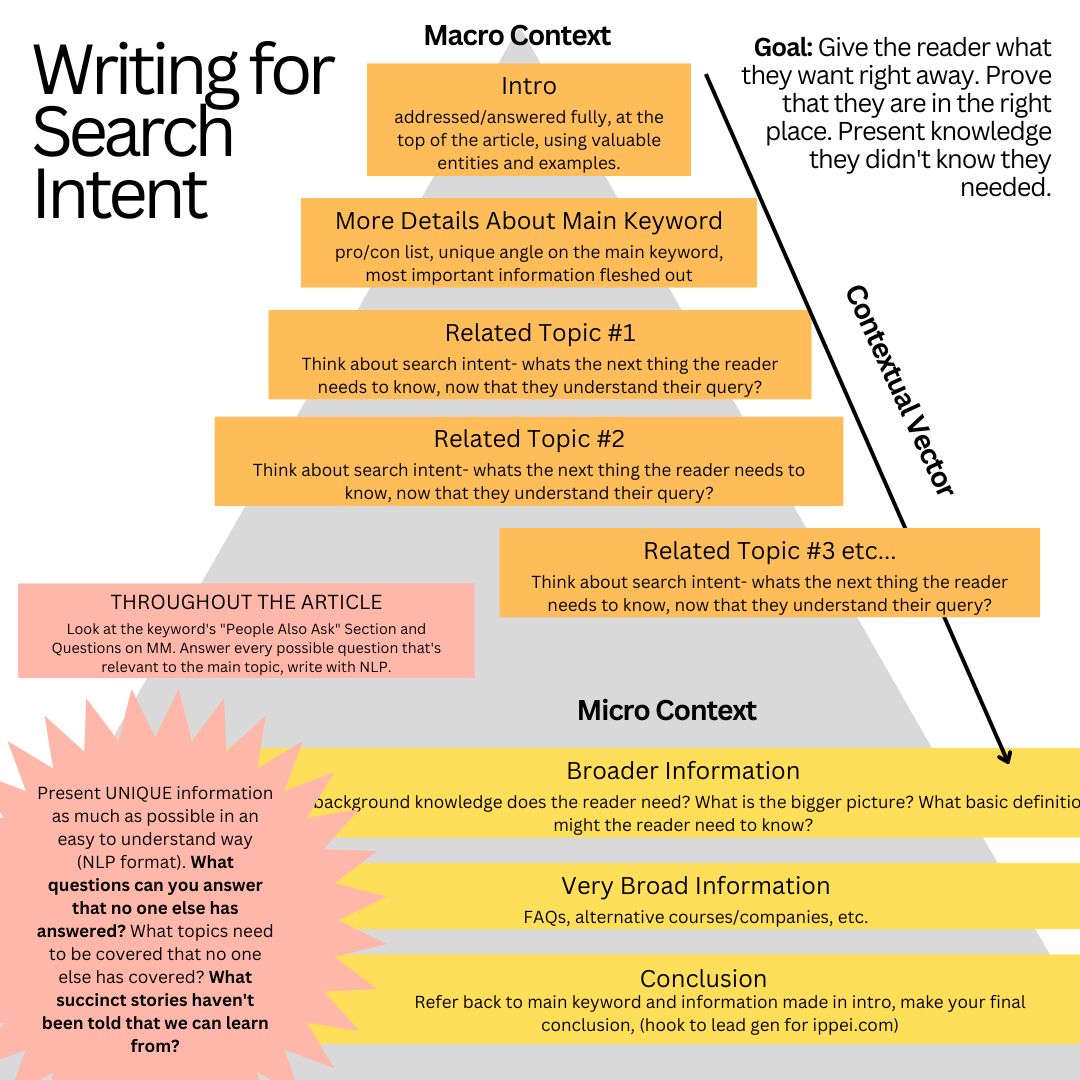
Modern SEO (writing for search intent) involves
- addressing the main topic/keyword wholly FIRST,
- supporting your point with high-level related topics,
- building a firm foundation of broader information, and
- referring back to your intro LAST.
All of this supporting information holds up the answers you present in your intro, much like the stones holding up the top of a pyramid.
The key to this is speaking to your audience, understanding them, and what they mean by their search.
These principles make a great article:
- Is the article concise?
- Is the writing authoritative?
- Is the article factual?
- Is the writing relatable?
- Does the article have proper grammar, punctuation, and spelling?
Keep it simple. Our readers simply want quick answers. They're not visiting the site for a creative writing or vocabulary demonstration.
Use facts and data to help establish an authoritative voice. Over time, you will become an expert on the subject matter, so let that expertise shine through. Back it up with lots of reputable sources.
Speak plainly and be relatable to the readers. Never try to appear smarter, nor should you dumb your writing down. Speak human to human. And keep in mind, many of our readers do not speak English fluently and have a varied education levels. What you write should be relatable to all.
Lastly, nothing kills authority like bad grammar, punctuation, and spelling. Proofread your articles and read each section aloud to yourself.
Just like curious end-users, Google wants to prioritize the most direct, concise, and reputable content in their search results. Their algorithm is getting extremely good at filtering out fluff content, too.
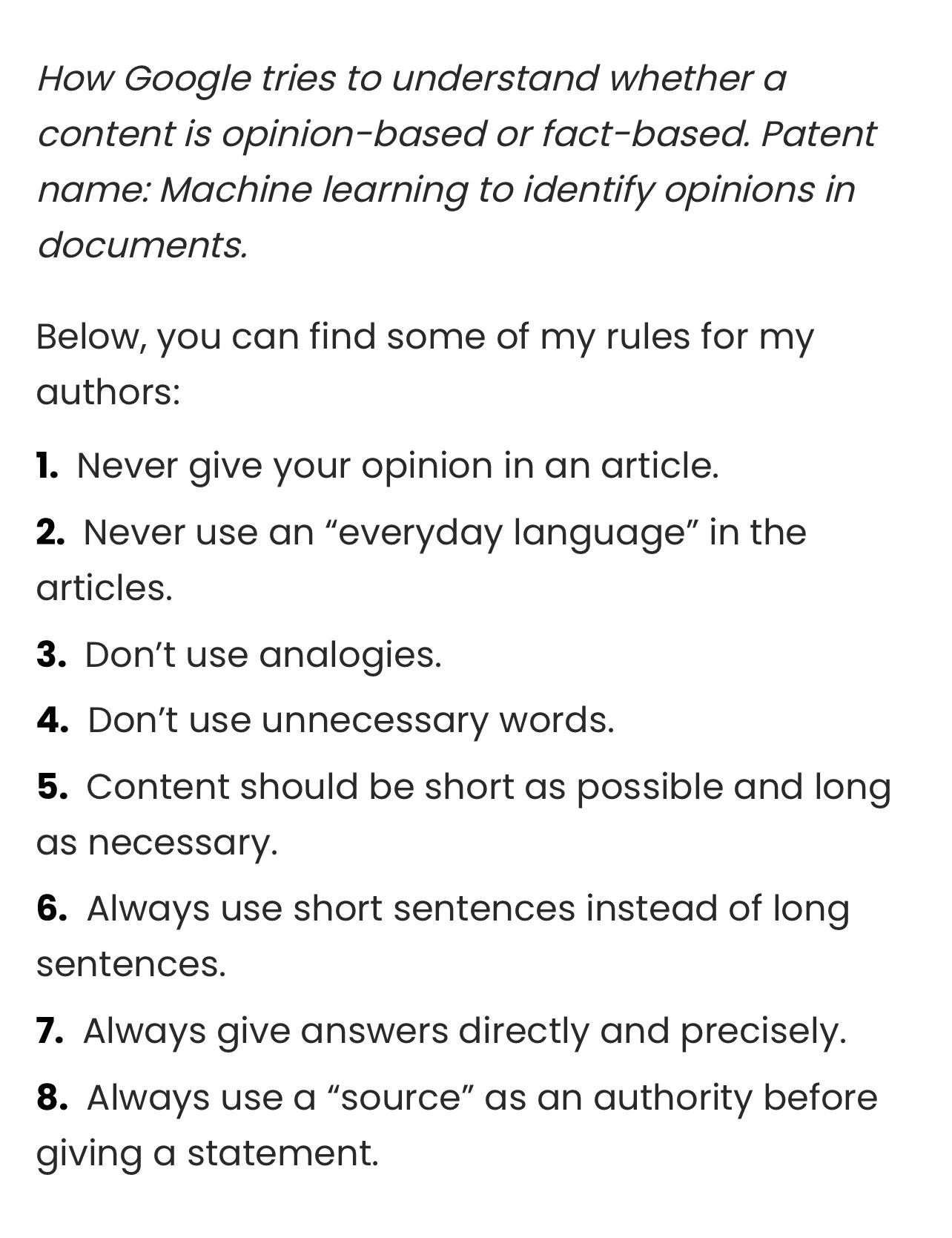
Writing in Short Form Copy
Read through this 300 word before writing each day to prepare your brain for short, business-style copy.
I went from being a bad writer to a good writer after taking a one-day course in “business writing.” I couldn’t believe how simple it was. I’ll tell you the main tricks here so you don’t have to waste a day in class.
Business writing is about clarity and persuasion. The main technique is keeping things simple. Simple writing is persuasive. A good argument in five sentences will sway more people than a brilliant argument in a hundred sentences. Don’t fight it.
Simple means getting rid of extra words. Don’t write, “He was very happy” when you can write “He was happy.” You think the word “very” adds something. It doesn’t. Prune your sentences.
Humor writing is a lot like business writing. It needs to be simple. The main difference is in the choice of words. For humor, don’t say “drink” when you can say “swill.”
Your first sentence needs to grab the reader. Go back and read my first sentence to this post. I rewrote it a dozen times. It makes you curious. That’s the key.
Write short sentences. Avoid putting multiple thoughts in one sentence. Readers aren’t as smart as you’d think. Learn how brains organize ideas. Readers comprehend “the boy hit the ball” quicker than “the ball was hit by the boy.” Both sentences mean the same, but it’s easier to imagine the object (the boy) before the action (the hitting). All brains work that way. (Notice I didn’t say, “That is the way all brains work”?)
That’s it. You just learned 80% of the rules of good writing. You’re welcome.
The Goal of Our Blog Content
1. To satisfy the needs of a curious Google searcher (publish high-quality content).
2. To intoduce people interested in digital marketing to Local Lead Generation.
To stand out better to Google, use specific entities rather than generic terms.
- EX: Instead of saying “he went to college” say “He graduated from Yale in 2020.”
The more specific entities we can cover per sentence / per paragraph, the more Google will favor our articles' authority.
The example below does a good job of covering specific entities. City, College Name, Company Name, Course Name, Podcast Name, etc

Entities come from:
- Marketmuse (software covered below)
- Keywords Everywhere (extension download above)
- ChatGPT (process outlind below) and
- Google suggestions.
Google suggstions is one of the most important steps because Google shares different searches from real users.
If our article covers them, it could rank for multiple search queries. HUGE impact on traffic.

Another way we want you to find entities is through Chat GPT, using this prompt:
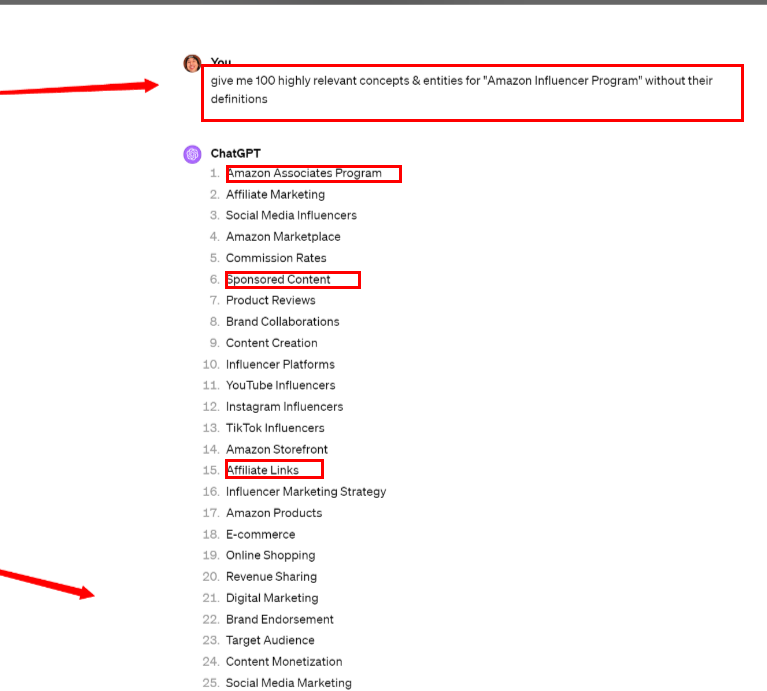
Choose 5- 10 terms, use ChatGPT to learn more about them.
Some of these words are too obvious like Digital Marketing, E-Commerce, Product Reviews.
These words are not that rare or unique to the topic at hand.
Keywords are different from entities.
Think of entities as "hyper specific" language that someone who really understands the topic would use.
Keywords are phrases we target.

For the article "Top ways to make money with craigslist" Related Keywords shows that people are also searching for things like “make money fast”, “make money today” and “make money without selling.”
These are all relevant to the main topic.
They are all things that will give different answers.
We need to include these in our article because these have search volume.
Notice how this article is ranking at the very top even though it has virtually the same title as ours. It’s ranking because he included the words "without selling anything" plus a section about it in his article.

Especially include longtail keywords like "how to make money on craigslist without selling anything".
This type of longtail is not going to have huge competition because it's so specific.
This means we can rank for it with an article just by including it in our content. It doesn't have to be our title.
On the other hand, ‘craigslist jobs’ we will naturally talk about.
Its such a broad topic that we will never rank for it with this current article.
Rather, we want to find more specific search query that's much closer to the specific topic that our article is going to be about.
Before you begin mining for questions, please first mine for all the related keywords that you have found that we will try to rank for with this one article.
You need to include questions from Marketmuse, the People Also Ask section of Google, and 3-5 unique questions that you come up with through research. These should be outlined in your Content Brief.
Neatly organize useful answers in your article so that it is easy to consume (contextual vector). This will require that you take the time to organize the answers in a proper order so that concepts are not all over the place. (Follow the search intent pyramid).
You should be able to go to any part of the article and learn something useful.
To write an acceptable answer to a question:
- Google the question and read up on the first 3 articles.
- Cover more relevant topics in your 1 article than the competition.
- Combine what you’ve learned into a “master answer”.
- Focus on answering the question in a better way, with more entities and facts than competitors.
- Take the time & effort to make your articles significantly better than the competition or it will not rank.
- Create sentences that have more entities
We are making sure our article is not only covering more topics, but each topic we're covering in a better way, a deeper way. For example:
“This XYZ event took place” isn’t as good as
“This XYZ event took place on XYZ date at XYZ location with 40,500 people in attendance as well as XYZ celebrities came to perform.”
This is what Semantic SEO is about. Google understands the English Language.
It knows that when you're talking about an event, there are other attributes associated specifically with events like date, location, how many people attended, what the event was called, what took place at the event, etc.
Using entities is a way for Google to understand (using more than just backlinks), that your article has more information on all these different topics covered, versus other articles with less information or "attributes".
In other words, if you're a true expert on the topic your sentences will have more information / attributes than a novice.
Granular Question Case Study:
Read through this article and this article.
Use your browser’s translator- Google Chrome works best.
Focus on granular questions about the main topic, like: "What to Know Before Going to Germany?"
Key Takeaway:
Dig deeper on your topic.
Write content that is much more in-depth and RELEVANT to the main topic than the competition.
NOTE: Broad Information
Many questions generated by People Ask and Market Muse get too far away from the context of your keyword.
The concern here is if we deviate too much from the main topic, it could give Google the wrong signal in terms of our contextual vector.
For example, if I wanted to learn more about Apple Pies but the article I clicked on went on too much of a tangent about the health properties of Apples in general, the article is more diluted in its focus and context to the search query.
Key Takeaway:
- Be mindful of getting too broad when working through your micro context. Do not include headers and sections that are too far from the main topic.
For example, could you turn, “What is most important in lead generation?" to "What is most important in lead generation software?"
The answer is Yes- but it may differ depending on certain cases.
For instance, when you change "What is most important in lead generation?" to "What is most important in lead generation software?" the context changes dramatically. What's important in a software is going to change dramatically with each software.
Also, users would probably never ask the question "What is most important in XYZ software?"
It’s far more likely that users would ask what a software does.
A better question here is "Why is XYZ software important to have in a lead generation business?"
The best approach is to keep those main questions, like “What is most important in lead generation?” but include software entities in our answer, like this:
“The most important thing in lead generation is to ensure you rank highly in the search engine so you get as many leads as possible. Software like Ahrefs really help determine the competition in the SERP and help you understand how to outrank them. It’s also important to track your leads with software like Callsling so the client knows exactly how many leads you're responsible for. This way, they can justify paying you what you're worth."
Try to come up with bare minimum 3 "Unique Questions" at the very bottom of your article, after any MarketMuse or PAA Questions.
If you can come up with more than 3 please do so.
These are questions that you come up with and you answer.
You have to use critical thinking here. Think to yourself "If I was researching this topic, what kind of other questions would I have?"
This is another key rank higher, as questions in People Also Ask are generated automatically by Google's bots. Google will look at our content more and more as a unique original source.
When you create the brand new question for "Unique Questions" it still has to make sense.
If you're not sure at all, try typing in this new question you came up with in Google.
Does Google show you the question in their suggested search?
In this case, we see it already has a related search, so this is a relevant question that people ask. Plus, another great question popped up that’s very relevant to our article (red box).
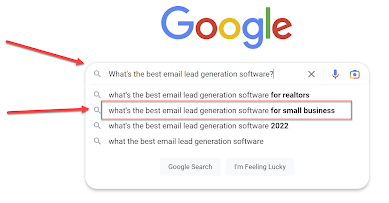
Answer the Public is another good source to mine more ideas for questions.
NOTE: Your Q doesn't always have to come up with suggested search.
Sometimes, the best Qs haven’t been searched a lot yet - which gives us a unique opportunity to have the answers before the queries go viral.
So, as long as you can understand and make the readers understand that this question makes sense in regards to the main topic, then it's fine.
Case Study:
Every course or business model has a unique angle they're pitching.
This unique angle is an excellent way to create our unique questions.
For example, this kid is talking about making money on TikTok shop without paying for ads. He also talks about leveraging AI
When people look at his ads and his videos, they may not purchase his program, but they may start searching for this information.
This is why its an excellent way to create longtail question & answer on our articles to scoop up that traffic

With this specific question in Google, there is NO website on the internet that answers this question directly.
This is a MASSIVE opportunity for us to have this question & answer in our article to provide a STRONG signal to Google.
We not only have unique information, but information that people are asking for in Google that other websites dont have answers to, This makes us source content.
Take a look at right side. You will see:"how to make money on tiktok without showing your face".
Although you might be tempted to include this one in our article, you have to look deeper to understand that this question is too broad context.
A better choice is the first question because its simply talking about making money on tiktok without showing your face.
It has nothing to do with tiktok shop and selling ecommerce with tiktok's dropshipping platform.

You can see other websites have already answered this question.
Again, the context is way different. This is just about being a TikToker that doesn't have to show their face.
It's not about TikTok shop / dropshipping on TikTok which is what the Adrian Dimac is talking about.
By closely paying attention to these sales pitch videos, think to yourself, "what is their unique angle?"
This will be what are they pitching to the public to get their interest.
There is always a hook, like catching a fish, this hook, is sometimes called an "open loop" in marketing.
It makes the audience wonder & question, which causes them to keep watching the video or purchase the product to find out what it is.
If a video created this open loop to thousands of people, then many people will search for that info to try to "close the loop".
Because its such a unique angle, KeywordsEverywhere will show "0 search volume" just because these questions will become more long tail & specific.
However don't mind the 0 search volume if you find that unique question that people will be searching from watching the pitch video.
FOR SURE include these in our articles as H2 or H3 questions followed by a concise NLP answer.
If the question is asking "How to", search intent is most likely best fulfilled in a literal "How to" list.
In fact, Youtube has started sending people to well written articles that do this when YouTubers search "How to..." on YouTube.
So, when you come across How To questions, ask yourself:
"If I was giving a speech or making a video on this answer, what would be the simplest way to demonstrate it?"
- Start your answer with a numbered list of steps for the BEST strategy you've found.
- Then, after listing those steps, go into your explanation of the steps.
Case Study: "How Do You Make Money Fast on Craiglist?"
This answer is far too general and in't very clear or informative:
"You make money fast on Craigslist by diversifying your efforts across a few of the ways to make money on the platform and seeing what works best for you."
Instead, craft your NLP answer like this:
“You make money fast on Craigslist by:
-selling junk
-arbitrage
-flipping to other platforms
Other ways people use Craiglist to make money include freelancing services, attracting business leads, delivery services, being a Craigslist middleman, and renting property. You can even tie in your affiliate marketing skills by sending job seekers affiliate links for digital courses, or posting a gig that contains an affiliate link."
This is especially important in intros.
If this Q was in an intro, you should list at least the top 3 ways to make money with Craigslist right away before any other content.
What About Answering Questions "in paragraph" that are NOT Headers?
Watch this video to learn how you can make your paragraphs more informationally rich by including NLP answers without stateing the question.
Watch 23:45 to 34:16 this video. Key takeaways include:
- Writing in a factual way is important.
- But, writing in a personal way is important, too.
- The decision between factual and personal writing depends on the question you're answering.
- Depending on the question, weneed to answer using different language models.
- A factual question's model would not have words like "could" or "might" because they lack authority.
REQUIRED READING- Technical Topical SEO Article: Holistic SEO
(set a reminder to come back in 2 months and read this a second time)
Technical Topical SEO article: Oncrawl
Techical Predictive SEO: Oncrawl
Content Marketing: Grow and Convert
Components of a Great Title
Course review titles: Course Creator Name + Course Name: Unique Angle
Ex: Aaron Richards ATN Unlimited Review: What Is The Automated Trading Network?
Broad topic titles: Keyword + Unique Angle
Ex: 20 Best SMMA Services To Offer in 2024: Key Factors To Consider + Pricing & Selling Strategies
Components of a Great Intro
Course review intros and long list intros: sneak preview of what all the topics will be covered in the article (details below)
Broad topic intros: For intros to articles asking for a specific question like "is XYZ business worth it?" answer as completely as possible. This may make your intros longer with pictures since we're trying to provide the most complete answer as possible backed by unique insights and real personal experiences.
(For examples, search "intro" in 2-top-priorities on Slack)
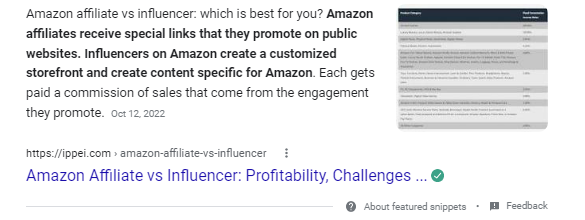
Your intro should be the last thing you write, the culmination of all your research.
The vibe: well researched, unbiased & fair.
Don't trash the business model, course, or creator. Just present your research (the more specific the better), and fulfill search intent.
The above is a real example of one of our intros getting the featured snippet.
- Address the keyword first.
- Combine all of your research into the fullest and shortest answer you can give.
- Use entities (and personal experiences for broad topic articles) to make this even stronger.
In the example for keyword "Amazon affiliate vs influencer", the difference is stated right away in the first paragraph.
Entities included are:
- Amazon affiliates
- special links
- public websites
- influencers
- storefront
- content (though, "content" could also be more specific)
This is far more clear and interesting than a sentence without entities, like:
"Amazon affiliate vs influencer: which is best for you? The first have links they post on websites, the second has a page on Amazon."
The second paragraph needs to include:
- commentary on the reviews you found on line (if doing a course review)
- AND /OR
- statistics/other relevant numbers (if doing a broad topic article).
For example, in a course review, the second paragraph would look like:
- "Some positive reviews of Cashflowpreneur said that this program did a great job on XYZ"
- OR
- "We also found some negative reviews of Cashflowpreneur that said this program didn't deliver on XYZ."
-----------------------------------------------------------------------------------------------------
Note: for articles where the KW is "course name + review", it's not its necessary to purposely include "course name + review" in the intro as its already in the title of the article.
However, the KW should be included in a header, like:
- "Course Name + Review on Reddit"
- OR
- "Course Name + Review: Course Pros and Cons"
-----------------------------------------------------------------------------------------------------
The third paragraph is a summary of the article to come.
There should be multiple, higher level leads in your writing.
A lead entices the reader to keep scrolling.
- A low level lead is like "to learn more, keep reading!"
- A high level lead is like "In this article, we'll cover the 4 hidden dangers of retail arbitrage. It's critical to pay attention to XYZ, making the wrong decision can set your business back months or cost you tens of thousands of dollars."
Note how a high level lead provokes an emotional response, while presenting facts.
Broad Topic Article kw: amazon fba success stories
- Low level lead: "In this article, you will learn the pros and cons of Amazon FBA, its different business models, and learn from real sellers why this is their business model of choice."
- Why do my readers really need to read this article?: To hear why successful sellers are profitable.
- High level lead: "These 5 real Amazon FBA sellers have been through it all: from being cheated by suppliers, getting suspended on Amazon, and ultimately finding their stride. Their strategies may be able to give you a leg up as you begin your own Amazon FBA journey."
- Why this works: it verifies that the upcoming content is true. It builds anticipation of bad things that the reader may not be aware of with Amazon FBA. It makes them apply whats coming to their own situation.
Course Review kw: Audiobook Income Academy review
- Low level lead: "In this article, we will go over exactly what the Mikkelsen twins teach in their new partially automated partnership and answer the question "Are audiobooks worth selling on Amazon?"
- What do my readers really need to read this article? To find out if this course is worth it
- High level lead: The Mikkelsen twins have built a partially automated platform to help you combat a very saturated market. Still, PublishingLife may be able to add another branch to your current Amazon publishing business.
- Why it works: It brings up a con (the saturated market) and a pro (that it could work) and a stipulation (it probably is best if you already have a successful Amazon publishing business). all of this makes the reader think at a higher level than when they first searched.
REQUIRED Linking Strategies
We want our anchor text to be as specific as possible to the article it links to. Usually, this means you'll use the keyword of the article itself. Here are some anchor text examples.
Our linking strategy is outlined in this video.
Whenever we create internal links, the anchor text should be in the heading above.
The article that the link is pointing to should have the anchor text in the title of that target article.
All internal links (EXCEPT ippei.com/best in conclusion) need these settings:
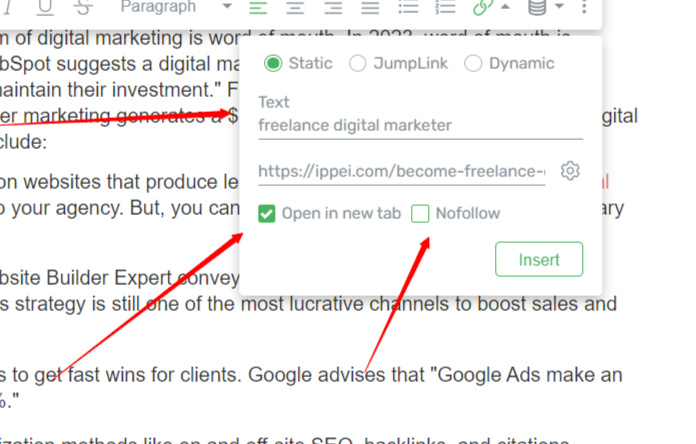
Focus on creating specific heading sections in the supplementary content of the article, near the bottom that talks about related topics to the main context, that is able to link out to supplementary content articles. The goal is 2-3 of these links per article.
LINKING CHEATSHEET:
Linking notes:
- Only link in micro context
- The anchor text of the link must be very similar to header of the section its in
- The ancho text of the link must be very similar to the title/topic of the article it leads to
- Internal links need to be do-follow
- Internal links do NOT open in new tab
- /best link however is NO-follow and DOES open in new tab. It is also the only link in the conclusion. The conclusion is the only place it should be linked.
One way to check- all 3 of these areas should be almost the same:

Components of a Great Conclusion
The conclusion should really hit home why the business model you're writing about isn't as great as local lead generation.
- Focus on the business model's glaring weaknesses and challenges
- how local lead generation solves these problems
- why we believe it's a stronger, easier business model for people to succeed.
- Include an eye-catching picture of local lead generation.
A low level way to link our lead gen course is like:
- "Local lead generation is my favorite biz model, click here to find out more."
A high level linking opporunity will compare the business model discussed in the article with local lead gen, like:
- "Local Lead Generation, on the other hand, uses organic SEO tactics that not only allow you to generate free traffic, but also lessen your overhead costs in the long run."
Think about the word "persuasion".Persuasion is the most important skill in business. Sales and marketing are offshoots of persuasion, but persuasion is the main skill. In most of our articles, we write in very fact based and less opinion based.
However, in the conclusion, be more persuasive and fact-based in your writing. Do this:
- In the first paragraph, tell the reader they they should consider local lead generation over the reviewed business model
- List the most challenging difficult thing about the business that you just reviewed. This brings doubt to someone that might try it.
- Then, very clearly explain why local lead generation is much better because it doesn't have those issues.
It is important to create the hook in the intro. But our conclusion being very persuasive is another key part of our articles.
Part of persuasion is using images. We have a number of business model specific images to use within our gallery. Explore other articles on your topic to see options.
Here's an example of a good conclusion:

Notice how this writer highlights what makes local lead generation better that is specific to the reviewed business model.
In this case, the business model is Airbnb property management. A good comparison is that owning a local lead gen site doesn't require dealing with tenant and maintenance-related nightmares.
This writer could've also mentioned the difference in start up costs like this:
"It only costs around $500 to build & rank a local lead generation site that can profit $750 to $2000 per month for years to come, versus Airbnb property on average will cost XYZ in down payment for a home/apartment and on average profit XYZ. Therefore, with local lead generation you have much high ROI, less risk & much easier time to scale the business."
Watch this video to learn about Unique Angles.
Key Takeaways:
- A unique angle is NEVER "is it worth it?" or "is it legit?"
- COURSE REVIEWS: Your unique angle is about the strategy of the course (not a claim given by the creator)
- Please make sure your unique angle section is directly after the pro/con cost/origin/rep table or macro context.
Training Modules Part 2
Deep Research (Finding Stats, Facts, and Images)
Local Lead Generation is a business model, developed and refined by Ippei Kanehara and Dan Klein, that aims to bring customers to local businesses.
This is done by building a website (aimed at a local business niche, like roofing, plumbing, HVAC, cement, etc.), then boosting that site to the top of Google's local rankings.
Once the site ranks on Google, it will generate leads which are then funneled to a local business for a monthly fee.
Ippei and Dan offer an online high-ticket course that has over 7000 students actively enrolled.
The following video presents the challenges of common business models we write about, compared to lead generation.
This video is especially helpful when writing conclusions (remember, conclusions always compare the article's business model to local lead generation).
Course Review Contextual Vector
Notes on a general contextual vector that most course reviews will follow (not to a T, but a guideline)
- Intro- fulfill search intent, lead to what is coming
- Optin image
- pro/con
- site-review-template
- most relevant information on course (probably referenced in the second half of the title)
- macro context- all info on course
- micro context- all info on creator
- bridge- claim screenshot/ claim section/ claims debunked section
- micro context- all info on business model
- related article section
- conclusion
Course review titles: Course Creator Name + Course Name: Unique Angle
Include information from Reddit, YouTube, and reviews from other sites.
Provide lots of screenshots and images; anything that aids in answering the questions listed below.
Readers want to know the following:
- Is the course worth the money?
- Is the course creator legit, or a scam?
- How much money does the course cost?
- How long does it take to make money from the course?
- What are people saying about the course online?
- Is the course being updated? Are the course creators active?
- Is the course a pyramid scheme?
- Are students of the course actually making money?
Imagine you're about to drop $2000 on a popular online digital marketing course.
What are the big questions you'd like answered?
BEFORE THE CONCLUSION
- Create a section that lists more in detail the challenges of XYZ business model (backed by stats or according to entity)
- In the conclusion, you will briefly mention those challenges again, but this time its about contrasting it with local lead generation and explaining why you won't deal with that challenge with local lead generation
- Most business models are not as passive as building and ranking sites that generate free traffic in Google, most business models is more saturated, less profit margins, requires a lot of ongoing effort, etc.
Personal Rather than Factual
- This question is best answered in a personal rather than factual way.
- For instance, we could create a better section if we brought one example from Reddit/Youtube that believed it was worth it and explain why.
- Then we could show another person that believed it wasn't worth it.
- Lastly, we could show our opinion, based on my understanding of what makes online businesses successful as an "expert in online businesses"
Differentiate from "Reddit" or "Quora" review sections
- However we need to be careful if this section looks too much like a "review" section, where we are displaying screenshots and commentary on things we found online.
- In some cases, sort of collapse a few different sections because having a section that showed Reddit reviews, etc and then the seperate section about "is it worth it?" will start to sound redundant.
Language patterns for opinion answers
- We can use language patterns to signify that what we are about to write is an opinion not a fact by saying things like "According to Tom Black, he believes the Airbnb Arbitrage is dead and no longer a great business model because xyz."
- Using words like "believe" will right away signal to Google that this is an opinion.
- So this is good to know that when appropriate we can actually share opinions and unique perspectives/experiences rather than staying all factual 100% of the time. and it does make sense, depending on the question and the context, it changes whether factual statement is more appropriate versus sometimes showing different opinions is actually more useful.
A note on AI
- This also gives us even clearer ways to ensure our content for each section / topic can be higher level than AI written content, because Google has released a new "helpful content" update to combat a huge influx of AI written content.
- We have to signal and prove to Google that our content was not pumped out by AI. To do this, back up your statements more with not just stats & facts backed by authoritative figures or companies, but also find different perspectives & experiences that was shared by actual people that used that product, or tried that course, or tried that business model.
Courses often release long videos or "free" trainings that we expect you to research before writing your article. However, this can take time. Use this tactic for getting through these marketing videos:
1. Watch this video.
2. Download this plugin.
3. Downlod their companion app. It allows you to directly download from this plugin.
4. After downloading, upload it to Descript (message Erin for login). Start new project in descript -> upload it -> Descript transcribes the entire video
5. Ask Chat GPT 4 to give you a detailed summary. If you want more details about any part of the summary, ask Chat GPT like so:

Broad Topic Contextual Vector
Its far more difficult to come up with something like this for our broad topic articles because their search intents are vast. But, generally, it would be something close to this:
- Intro- fulfill search intent, lead to what is coming
- Optin image
- most relevant information on search intent (probably referenced in the second half of the title, i.e macro context
- bridge- next most relevant information before micro context
- micro context- broadest relevant topics
- related article section
- conclusion
Broad topic titles: Keyword + Unique Angle
Note: micro context for BTs is shorter than Course Reviews
Common Broad Topic Article Business Models
Amazon FBA
Fulfillment by Amazon simply means to sell goods on Amazon (which includes using their logistics network to process and ship orders). There are 3 primary forms of Amazon FBA.
Retail Arbitrage
Looking for good deals and discounts, purchasing used goods... Anything that can be purchased for cheap and then flipped on Amazon.
Private Label
Buying unbranded (white label) bulk products from Chinese suppliers. Private label sellers typically have their own brand, which is then applied to the products and sold.
Wholesale
The same as private label, except you're buying products from reputable brands. The quantities are usually much higher, too.
Dropshipping
To dropship is to serve as a middleman between the buyer and manufacturer. You manage a web store and market products, but don't actually own or ship any stock. Stores are most commonly hosted on Shopify or eBay.
Stock is purchased as necessary, typically from a wholesale 3rd party supplier (like AliExpress or Salehoo), who then fulfill the orders.
Digital Marketing & Entrepreneurship
Facebook Marketing, Affiliate Advertising, Lead Generation, etc... Once again, if it pertains to making money online, then we're likely publishing articles on it.
Training Modules Part 3
You must create an article checklist for every article you write.
Answer all People Ask, Market Muse, and Self-Generated questions FIRST with the best possible NLP answer.
After the article is written and some NLPs may have been adjusted, update AC before submission.
Every AC includes:
- A link to the article
- It's title (If writing a course review, start with course creator name + course name)
- The main keyword
- The searcher's intent
- Your unique angle
- Entity Report:
# Keywords Everywhere Entities (list, entities, here)
# chat gpt entities (list, entities, here, aim for 10)
2 deep entities added in intro: (word, word)
# google generated entities (related search)
#/ out of # MM entities (list, entities, here) - A list of People Also Ask questions and your answer, as found in your article
- A list of Marketmuse questions and your answer, as found in your article
- A list of unique questions and your answer, as found in your article (3-5)
Access this template here.
Creating your NLPs in your Article Checklist with answers FIRST is a more concrete way to ensure that the article you’re producing is of higher quality than the competition.
To access Marketmuse:
- Go to https://www.vultr.com/
- Sign in with albertseocw@gmail.com / %6Dbp(Jaa6.)i+A_
- Message Erin and request your official Marketmuse sign in info
- Click "View Console" here:

Some notes on the console and Marketmuse:
- You won't be able to copy and paste from your console to the remote console.
- Open the Cluster sheet in the remote console and open your work there.
- You should only use Marketmuse for maybe a brief check or two prior/during writing, and then one final check.
- Do NOT do any writing inside Marketmuse alone - it does not save.
- We don't focus on the content score anymore. Check to make sure its in the vicinity, but don't spend a ton of time on it.
- NEVER try to get the highest score possible- this indicates keyword stuffing.
Marketmuse will look like this to you:

Here's how to see MM Questions:

Here's how to see the Heatmap:

These videos will explain what to do:
Take lectures 34 - 50 in Koray's Semantic SEO course.
- Username: ippeikanehara7@gmail.com
Password: 1Jobk!ll!ng
This course is complex and high level. Here's our version of the training:
Part 1
Part 2
Guide
Content Brief (FULL) Template
As a beginner writer, you will not be writing Content Briefs.
But, it's good to understand the background, as you will be writing articles off of Content Briefs.
Also, as your skills grow, you may be asked to become a CB writer.
Broad Information IS Micro Context
Course Reviews = longer micro context
Broad Topics = short micro context
Always think critically about the search intent. Writing through search intent shows that the article is concise and highly relevant to the search query.
Too broad information will dilute our article which ultimately makes it harder for the reader AND Google.
This also unnecessarily increases our word count and decreases productivity because these articles will now take longer to complete.
We have to be disciplined to not get carried away writing content that is too broad & not so helpful for the search intent.
If you go to any part of the article randomly, you should be able to spot out fairly quickly some useful information related to the search intent.
For example:
- If it’s a broad keyword like "How to start selling on Amazon FBA", there are many topics related to the Amazon FBA business to cover.
- However if the keyword is "Is Amazon FBA profitable?", assume the reader is already aware of the basics of Amazon FBA. They just want to know the profitability of this business.
- So, the topics we cover should be around that specifically like the cost, profit margins, what influences profitability, etc…
- If Market Muse or People Ask has questions that are very general like “What is Amazon FBA?”, we have to use critical thinking to understand that we shouldn’t be extensively covering those broad topics on this article because the search intent is so specific.
In general we should strive to have 80% of the topics and headings within our article to be supporting the search query & search intent.
There are times where it does make sense to cover topics that are bit more broad. But, this is only included within the right context.
For instance, "increasing word count" is not a bad thing if that content is still highly relevant to the search intent and you're covering things in a deeper way than the competition or providing new connections to new entities to make our article stronger, bringing something new to the table, a unique angle...
After you have a grasp of the above, feel free to take the rest of Koray's course between assignments.
Training Modules Part 4
Switch between Intro v1 OR Intro v2 for each article you write.
pro-con-tables is used in all COURSE REVIEWS.
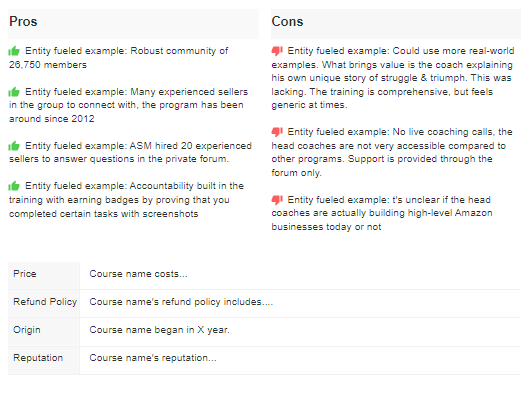
site-review-template placed after all course review pro con tables
Looks like this on the back end (in Thrive):

Looks like this on the front end:

Tips:
- of course, dont use the same name each time
- dont sound too formal
- try to include reviews that mention things only people in the course would really know (the one in the vid is a good example)
h2-header should be used for H2s. H3s, H4s, and H5s are 15 px on top and 0px on bottom.

profile-image-text

bullet-list
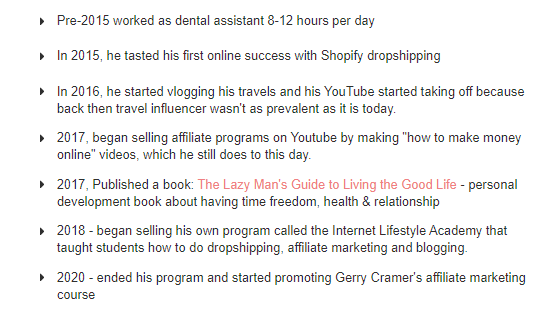
toggle-use
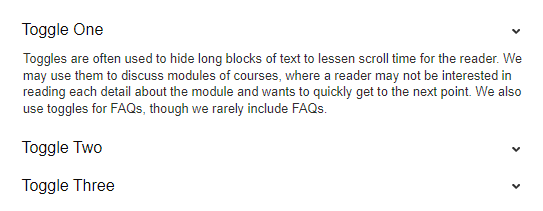
summary-box-red

keytakeaways

If you are a snapps.ai writer, you don't need to learn Thrive.
Instead, watch this video and log in with: claimingpower10@gmail.com / 1Snowman!
For ippei.com, we use the Thrive Architect WordPress plugin.
To place your work, select "Launch Article With Thrive".
David Delos Reyes is your Slack member resource if you need Thrive help.
2024 Commentary for Thrive Editing 1:
- URLs are always thee keyword without unnecessary words (a, the, and, etc.).
- Featured images can be a screenshot or AI gen image.
- Don't spend time on Yoast
- Save post before hitting Thrive Arcitect
- Don't add buttons, shadows or crazy templates
- Refer to Thrive Style presentation above for layout
2024 Commentary on Thrive Editing 2:
- Do not add buttons
- Do not create borders
Watch Thrive Walkthrough (skip "read more tag" section) next.
Then, watch thevideos below and use as a guide while uploading your own articles:
Mobile View Trainings:
Content Boxes (videos listed after this one, don't miss!)
Other Tips and Tricks:
- Text Elements
- Multiple Select Mode
- Drag, Drop, Dup Section ONLY
- Dynamic Dates -When you are talking about the current year, highlight and click here. (Click image to enlarge)



Every course review you write must have a blurb in a related "top course list" article.
Here's the process.
Not all courses deserve to be on the "Best XYZ Courses" article. However, we can create another H2 towards the bottom of the article that says "Affiliate Marketing Courses to Avoid" and begin listing courses that aren't so good on there. For these, we don't need a whole paragraph explanation of the course review, we just need 1-2 sentence as to why this course should be avoided.
Resource sheets are pinned in the 5-cluster-link chat.
Special Project Training Modules
Article for those updating old articles
- Update at least 20-30% of the article to signify to Google that they should re-crawl our page. This will give us credit for "freshness"
- When search engines return to the article, they see that it has more information, said in a better way.
- This is what we mean by "I try to remove as much clutter and fluff as much as possible" aka try to not over inflate word count too much, remove redundancies in the content
Koray does this prompt to get more entity ideas for his stock trading website:
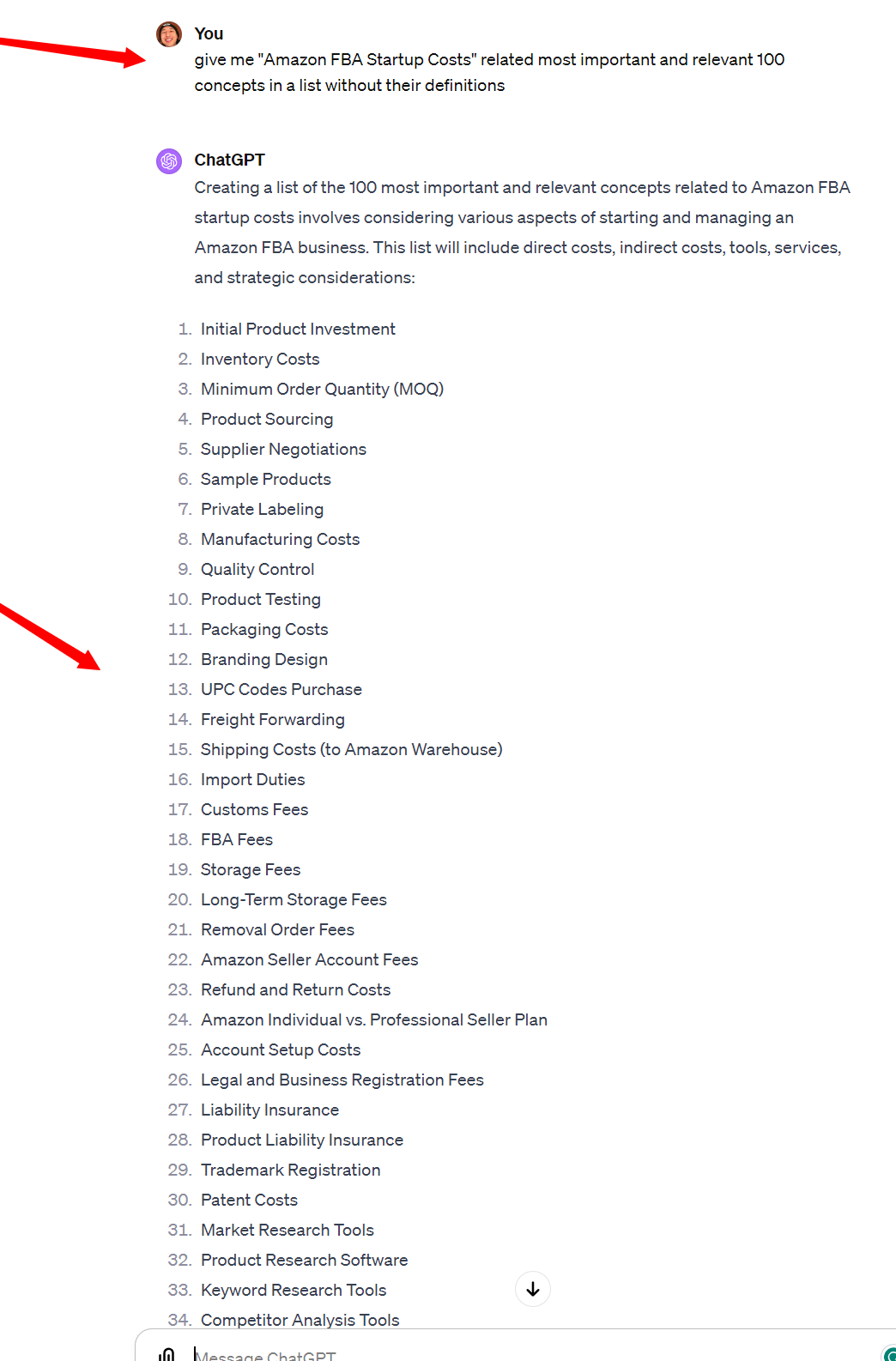
It gives incredible list of different types of Amazon FBA costs we could cover that aren't even in the top 3 ranked articles.
Further prompts to understand each item can be done asking ChatGPT further
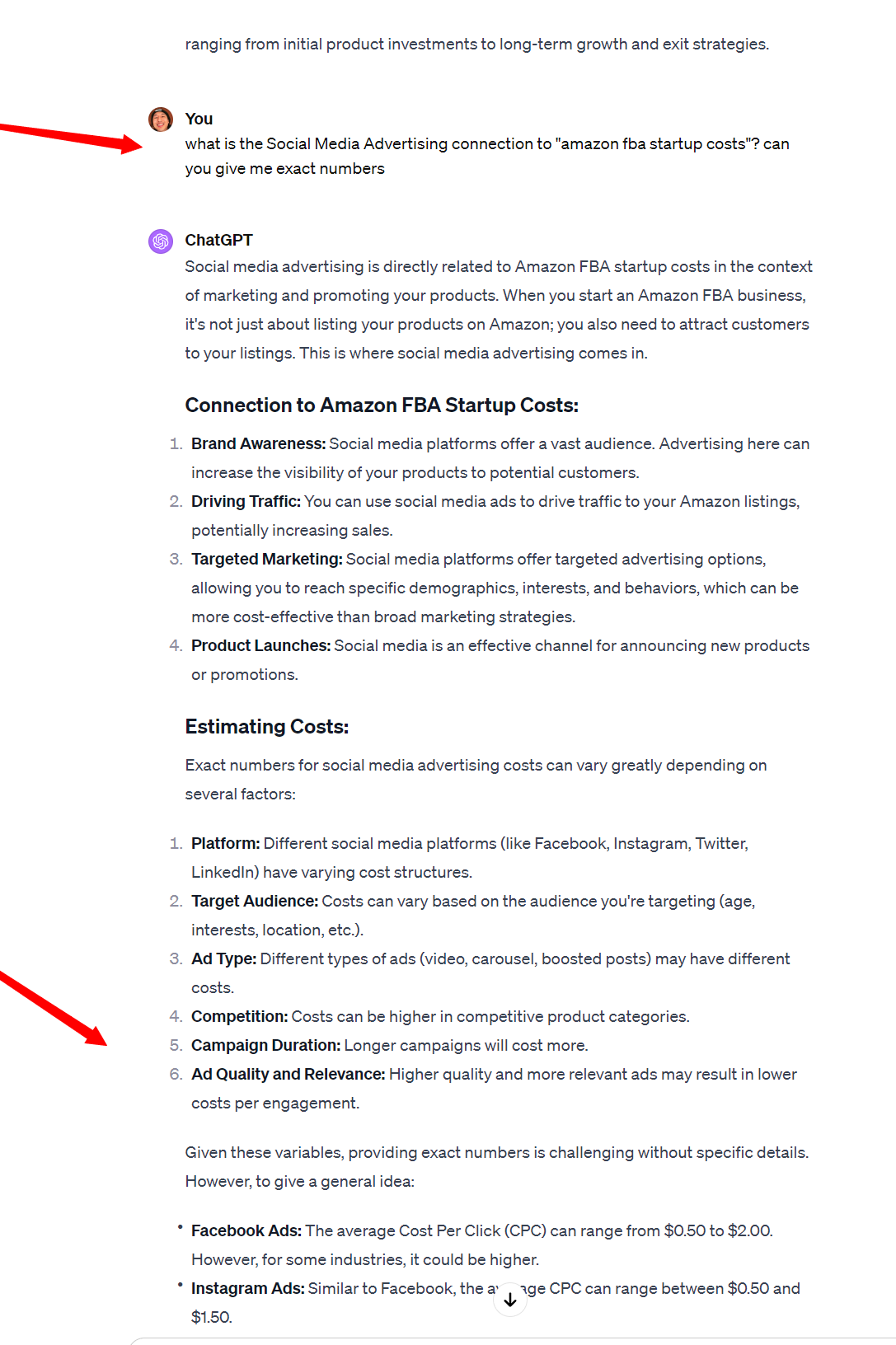

Koray says:
"If you're able to use the most important entities with the right context with the most important attributes with the proper connections, you will be creating an information graph."
Basically with this giant list we can make more unique connections between "Amazon FBA startup cost" and these other entities than the competition.
If we can do it in a concise way, we can make content that becomes even more dense with information.
Historical Library
Brian Dean's Definitive Guide to Copywriting - Brian Dean influenced our philosophy and style.
Copyright - Ippei
